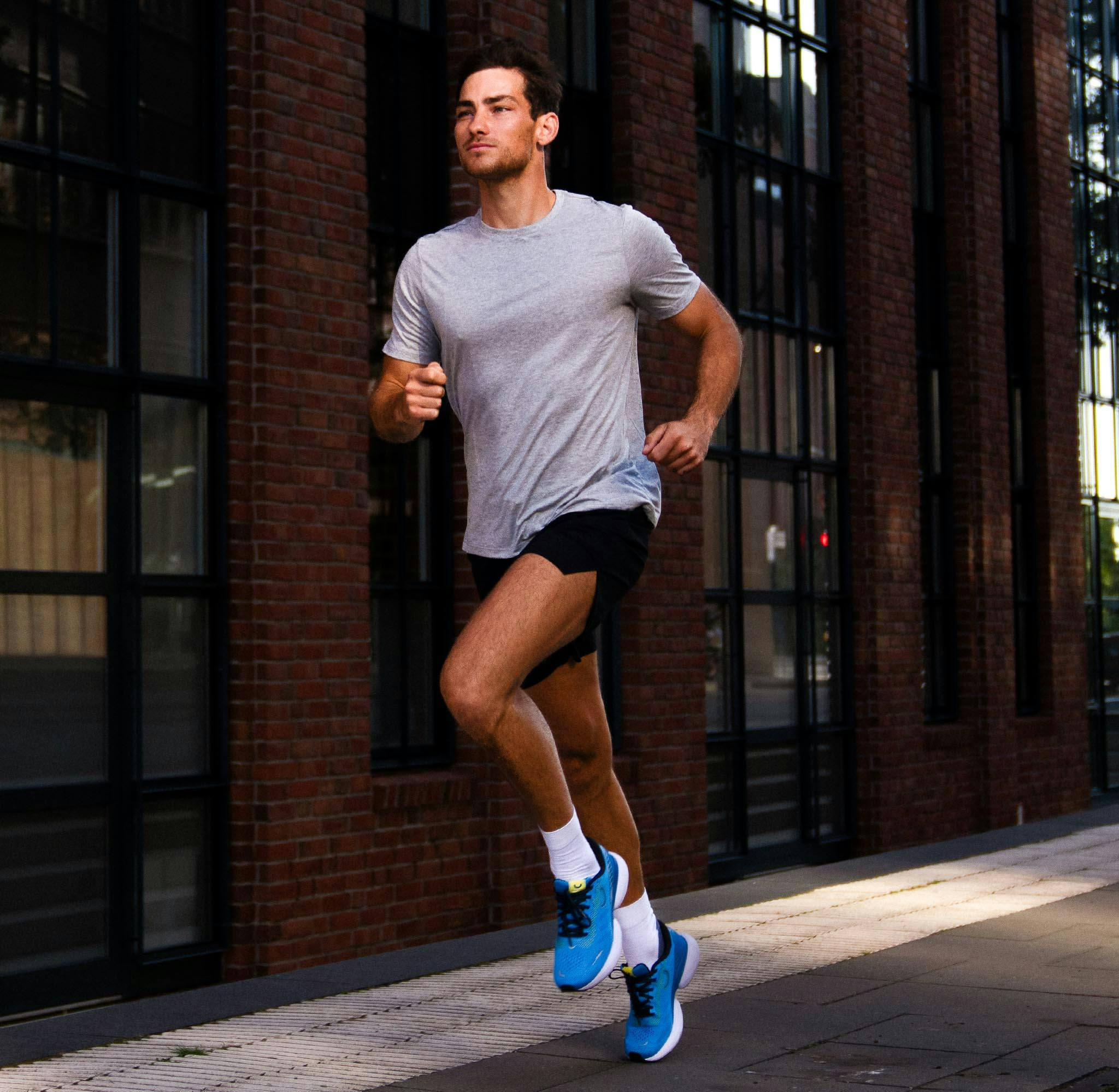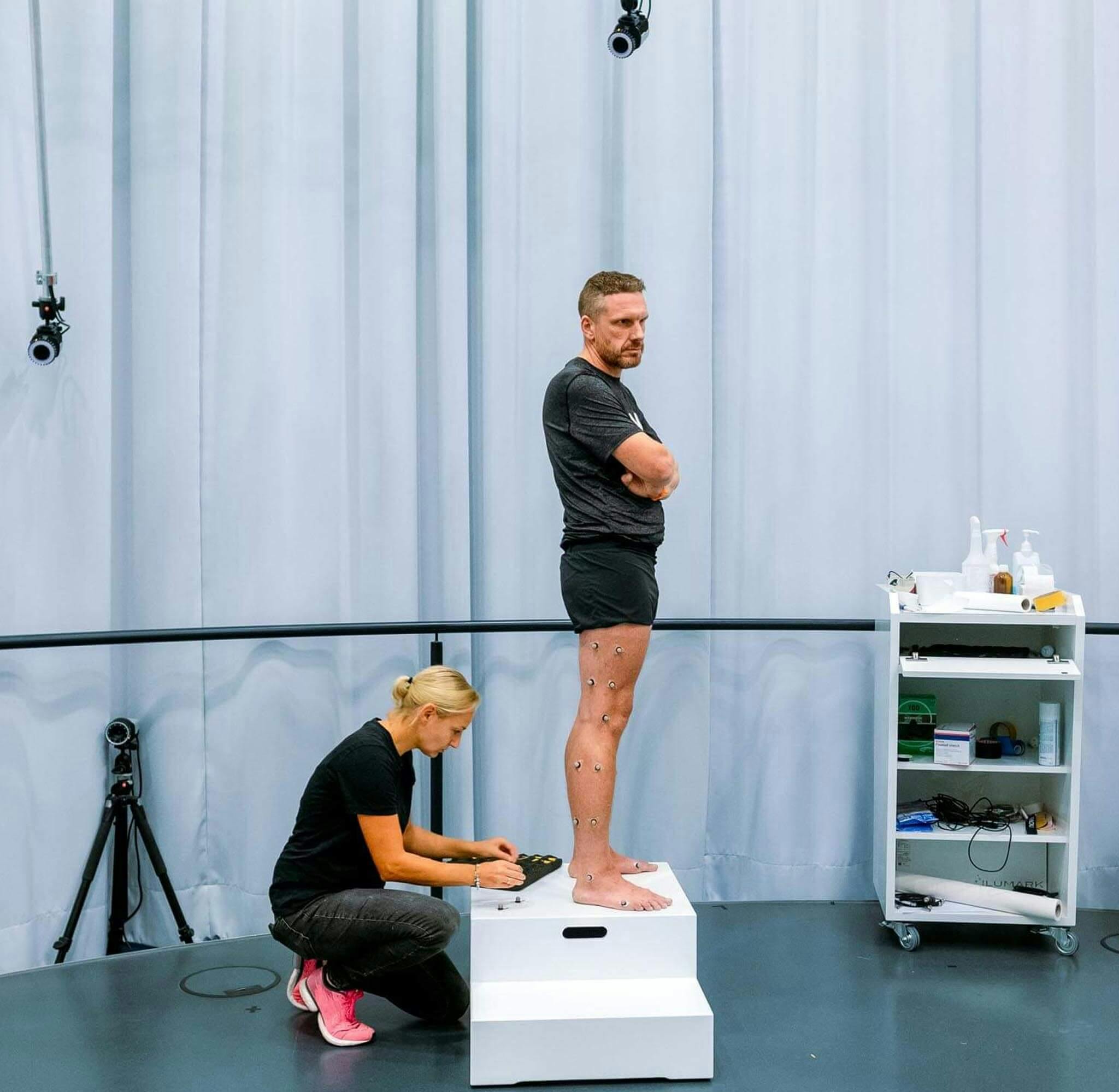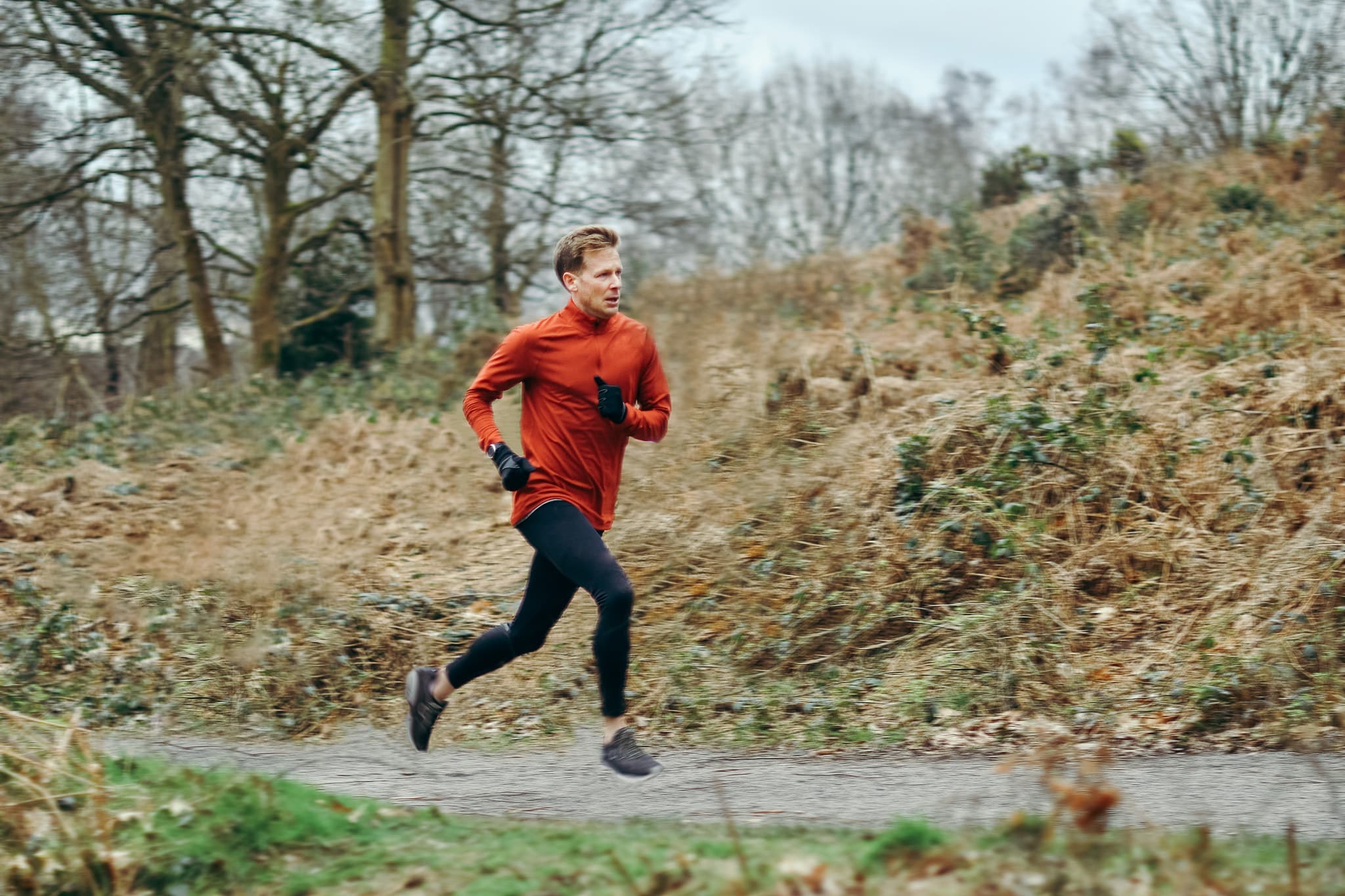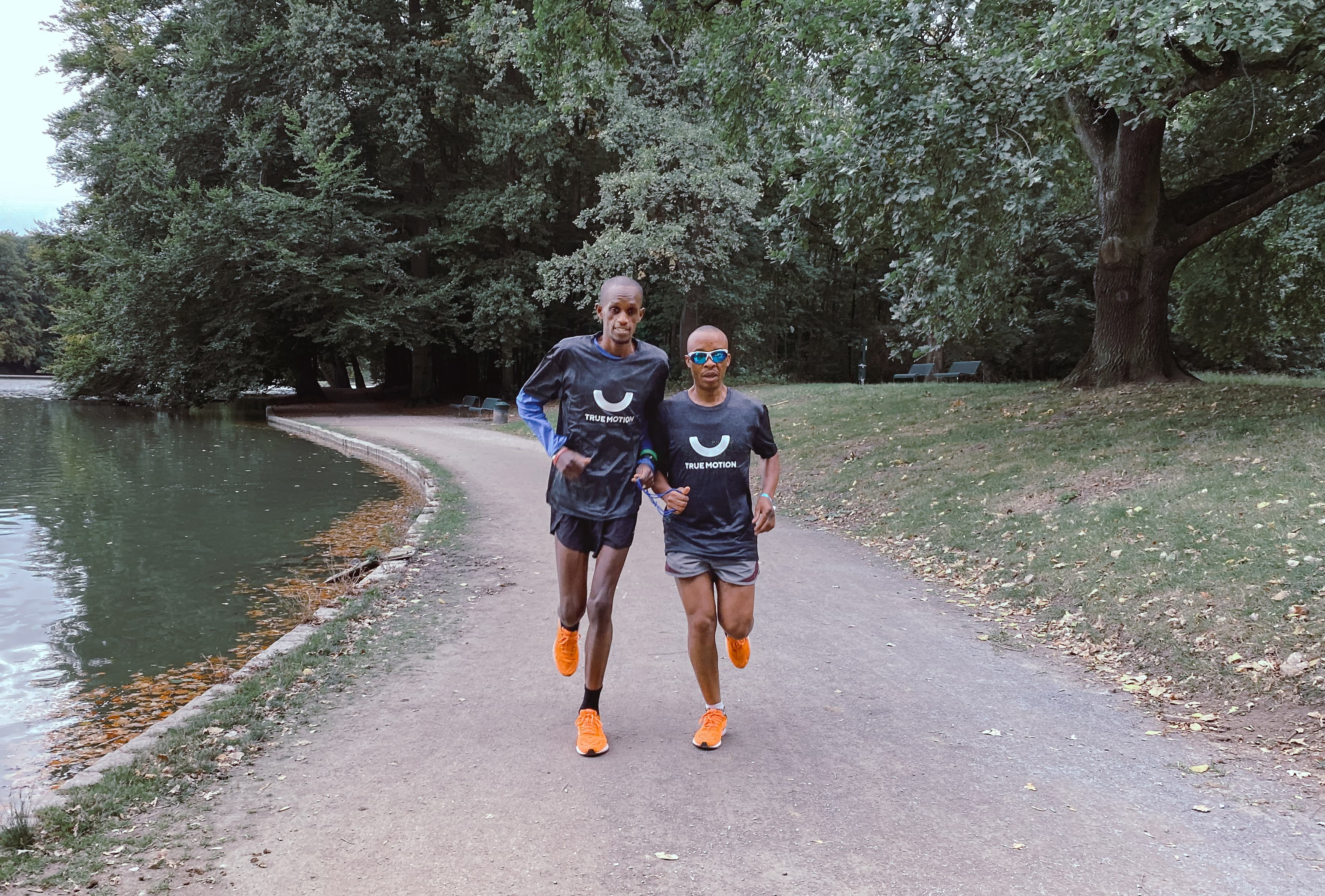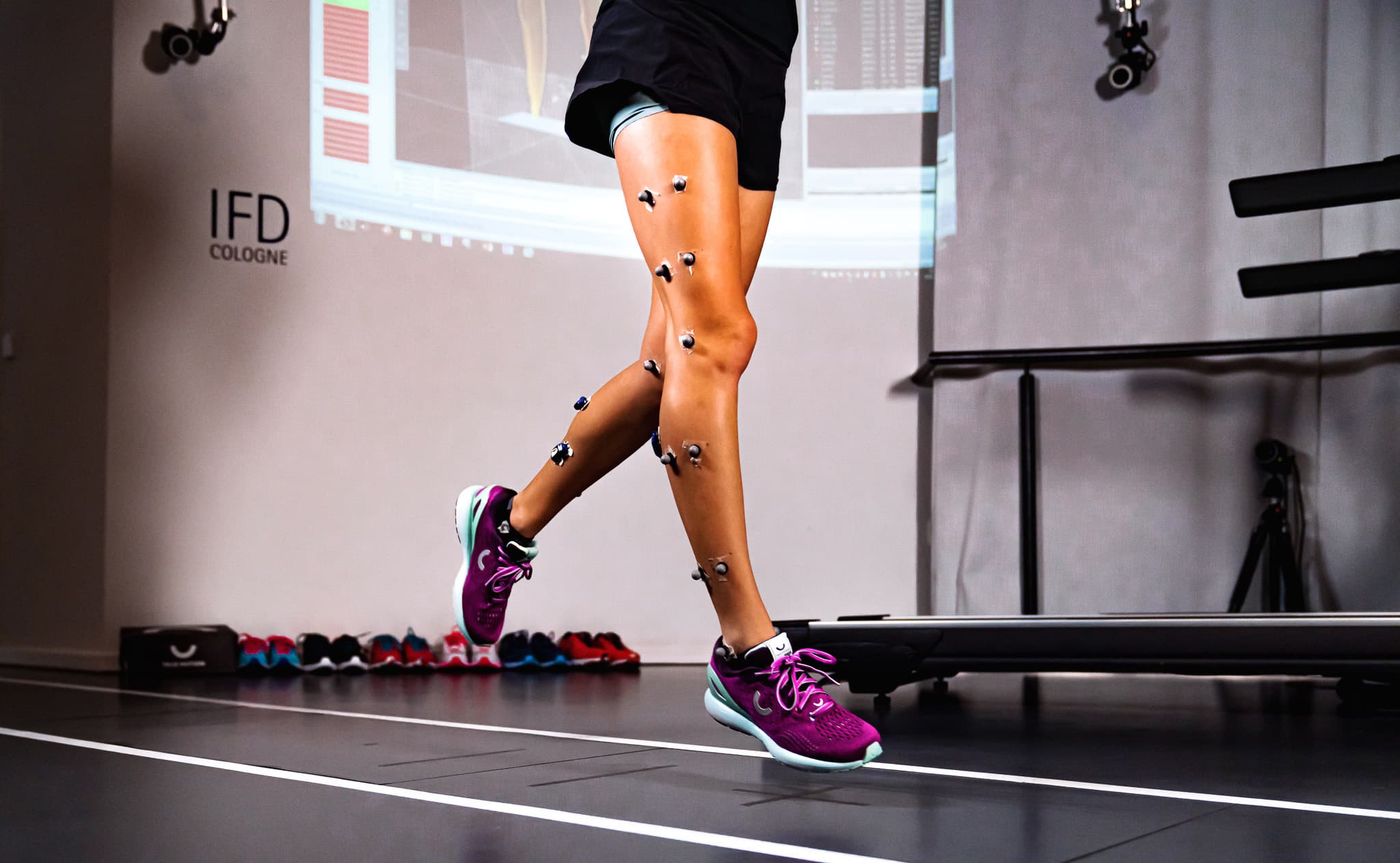
Training for a 10K – Participate, Get Better, Win
2nd January 2022
Running ten kilometers sounds scary at first, especially for beginning runners. But with the right preparation, sensible goals, and a little discipline, even beginners can do well in a 10K, says David Harmer, former national coach at the British Athletics Association and True Motion Tech & Brand Representative. He reveals what’s important when training for a 10K – and how even experienced runners can improve their performance. A guide for beginners, advanced runners, and ambitious amateur runners.
Content:
Finish: train for your first 10K
Improve your performance: become faster in a 10K
Compete: run a 10K competitively
The 10-km run is a real classic. It is a part of almost every running event – the New Year’s Eve run, fun runs, and charity events – or even major marathon competitions. There is a reason for this: recreational and ambitious runners alike love this long-distance discipline. Compared to other races, the list of participants in the 10-km race is almost always the longest.
However, the participants’ goals could not be more diverse. While some simply want to reach the finish line, others want to improve their performance – or even get on the winners’ podium. “Whatever personal goals runners have,” says David Harmer, “they can often achieve them in a few weeks with proper preparation.”
David Harmer knows the different goals runners have all too well. For 14 years, the current True Motion Tech & Brand Representative coached professional athletes. Most recently, David was the national coach of the British running team for seven years. In 2016, he coached the team at the Olympic Games in Rio de Janeiro, and he also coached British runners at World and European Championships.

It is actually impossible to create a universal training plan for a 10K. Too much depends on the individual performance level and goals, explains David. Nevertheless, there are tips that can help us prepare properly for a 10-km run – according to individual performance levels. The result is a guideline for three running groups.
The finisher group: Runners in the finisher group have the goal of finishing their first 10K. The goal is not to run the ten kilometers in a certain time, but to cross the finish line at the end. Especially runners who are new to running and have set their first personal goals are part of this group.
The get-faster group: The get-faster group includes runners who have already run their first 10Ks. They know the distance and have a first feeling for how long it takes them on average to run ten kilometers. Their goal is to improve their previous performance in a 10-km race.
The competitive group: Runners from the competitive group have already participated in several 10Ks. As ambitious runners, they now have the goal of running the next 10-km race with a competitive mindset.
In our guide, David Harmer explains what good 10K-training for these three groups can look like.
Finish: train for your first 10K
Even as rookie runners, we can be ready for our first 10-km run relatively quickly. What ultimately matters is our level of performance, says David. “To start training for a 10‑km run, runners should be able to easily run for 20 minutes at a time twice a week.” It is not about how fast we run – but we should be able to sustain the load well over such a period of time. David adds, “If that’s the case, a runner is ready to prepare for a 10K.”
The training program for the first 10-km run
Especially runners who have never trained for a specific distance find it difficult to set up proper training plans. It’s therefore all the more important to correctly schedule the number and length of runs – and to take enough time before the first 10-km run.
“Over the course of the training program, runners should be able to exercise for about the same amount of time as they would for the 10-km run at one stretch,” says David. It usually takes us at least 60 minutes to finish our first 10K. “That doesn’t mean we have to run 60 minutes at a stretch either,” the expert explains. “It’s more about getting our bodies used to moving on our feet for that amount of time.”
At least twice a week, we should go out and run in preparation for a 10K. “It’s even better if we have time for three runs a week,” says David. But one of those three runs should be used for real training – with different speeds and small recovery periods.
For beginning runners, the goal when training for the first 10K should be to steadily increase the time of uninterrupted movement. “The key to success is to get our body used to enduring the long effort during such a run,” David explains. Once we can run for about 40 minutes at a time without any problems, we have established a good foundation.
From this moment on, it is important that our runs do not become too monotonous. If we continue to run our laps consistently, we find the sport harder – and we lose motivation more quickly. “We make running easier for ourselves if we also vary our workouts,” David says. Instead of running constantly, we can train with fartleks, for example.
In this special running training, we look for reference points on our route, such as a tree, a larger rock, or a bench. Once we have found such a point, we can run up to it at a faster pace – and then continue running or even walk at a slower pace. “These short tempo sessions should be about 30 to 60 seconds long,” David explains. “If we intersperse our training with such elements, running feels much easier right away.”
When we are ready for our first 10-km run
When we are ultimately ready for our first 10-km run also depends a bit on when we feel ready. However, this is usually the case after four to six weeks at the earliest. “If we’ve been running consistently twice a week during that period, steadily increasing our training time, we can think about running a 10K,” David says. “Better, however, would be an 8-week preparation.”
“If we want to run the ten kilometers at a certain pace, we can integrate that into our preparation”
Usually, after this time, we are able to run effortlessly for 40 minutes at a stretch. “At that point, it should be possible to finish a 10-km run,” David believes. However, we often have small, personal goals even before our first competition – for example, to run at a certain pace. We can train this well with so-called interval runs.
“If we want to run the ten kilometers at a certain pace, we can integrate that into our preparation,” says David. It works best if we run three to four longer intervals at the pace we want to run the ten kilometers later. “Ideally, the intervals are eight to ten minutes long – with breaks between one and a half and two minutes,” explains David.
If we succeed, there’s nothing standing in the way of our first 10-km run. But there’s one thing beginners should keep in mind at the start, says David: “We should always start slower than we think – and then gradually increase our pace.”
Improve your performance: become faster in a 10K
For those who have already run several 10-km races, at some point it is no longer enough just to finish. Usually, with experience, we also want to increase our performance. “Anyone who regularly runs about 30 to 40 minutes three to four times a week can train for such a goal,” David is certain.
The training program for a better 10-km run
If we want to improve our performance in the 10-km race, we also have to change our training. “The training goal is to be able to run six to eight kilometers at the speed we want to get to,” explains David. With warm-up and cool-down, such a unit will be about ten to twelve kilometers long.
PERFECT FOR ANY PACE BOOST:
DISCOVER THE U-TECH SOLO
RUNNING FAST AND ENJOYING TO FLY
Midfoot, forefoot, or rearfoot strikers – all runners who want to step on the gas have one thing in common: they touch the ground farther at the front of the sole. This is exactly where we placed a new version of our unique U-TECHTM technology, Double U. Inspired by the natural motion you sink into the twofold U-shaped construction. U-TECHTM surrounds your foot, centers forces, and thus provides you with support and physiological stability.
However, not all running sessions during the week need to be trained at this high intensity. “We should go running at least three to four times a week,” says David. One or two units should then consist of fast runs.
In addition, it helps to always include short tempo sections in the slower units as well, or to pick up the pace again at the end of the relaxed run. “This increases the quality of the training enormously,” explains the running expert. This way, we train more efficiently.
What training method can we use to increase our 10K performance?
To improve our performance in a 10-km run, we need to train at our threshold pace. “This so-called anaerobic threshold is a hugely important training area and ultimately the key to success,” says David. Also called lactate threshold, it’s roughly the pace at which we can just about run a 10-km race.
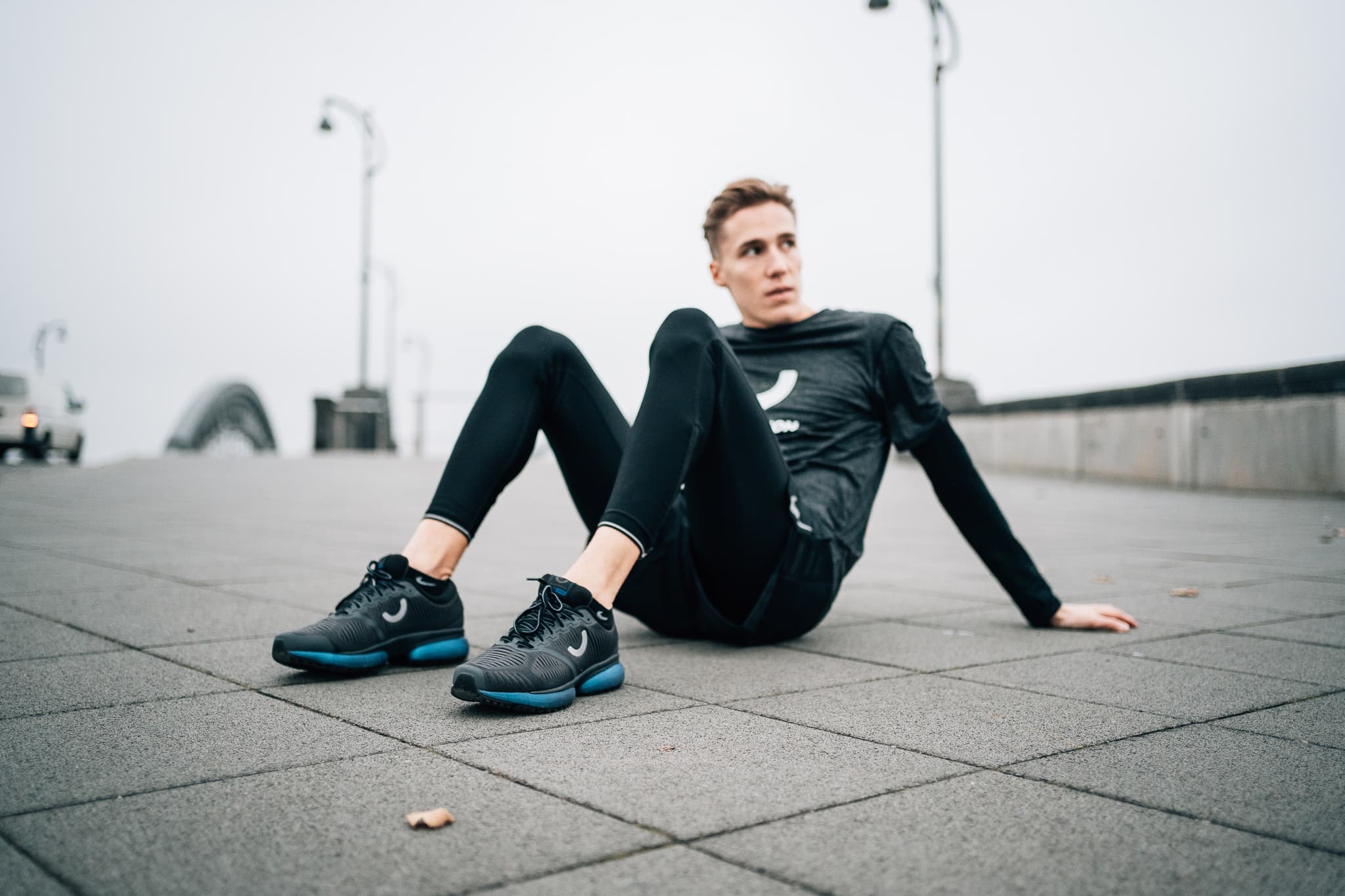
“The advantage,” David explains, “is that we can train this threshold well.” We do that best in three different ways:
Sustained load: To increase our performance, we can train with sustained load. This works best by running just below our anaerobic threshold for about 20 to 30 minutes.
Longer intervals: Longer intervals also help us improve our threshold pace. To do this, we run near our anaerobic threshold two to three times for eight to ten minutes each time. In between, we take two-minute recovery breaks.
Shorter, fast-paced intervals: Shorter intervals also improve our performance. However, we must run them at a pace that is just above our anaerobic threshold. This requires four to six five-minute intervals, each with a one-and-a-half to two-minute rest.
From this moment on we are ready for our 10-km run
If we train intensively for eight weeks and run three to four times a week, we have a good chance of improving our performance in the upcoming 10-km race. The important thing is that we train the three methods described in alternation during this time. “If we do that, we’ll be in good shape after these eight weeks,” says David. Our intensive training should not last much longer than that. Otherwise, there is a risk of overloading – and injuries would be the result.
“After these eight weeks, we know how fast our pace can be for the 10-km run.” Still, on the day of the 10-km run, we shouldn’t run straight at it. “It helps if we start a little more conservatively for the first two kilometers,” David says. “That will guarantee that we can run at a consistent pace throughout the race.”
Compete: run a 10K competitively
Ambitious runners not only run against the clock – but also against their competitors. “If you want to be a bit more serious in a 10-km race, you should start running consistently at least four times a week before you start your training program,” says running expert David.
This is not just about moving at all, but also training intensively. “It would be good if we already ran more than ten kilometers once a week and about five kilometers once a week – and at an intense pace.” If you do that, David says, you can also train for a 10-km run at a high level.
The training program for a fast 10-km run
Now, anyone working toward such a high level should run at least eight kilometers per training session at the race pace of the 10-km run. “However, this doesn’t necessarily have to happen in one piece,” David explains. The expert suggests three methods:
Interval training: to run the eight kilometers at race pace, we can divide the distance into eight intervals, each one kilometer long.
Tempo endurance runs: at a constant speed just below our pace of the 10-km run, we run six to eight kilometers.
Short tempo runs: if we shorten the intervals, we will have to pick up our pace. In this workout, we run 400-meter intervals 16 to 20 times at a pace we normally run on five kilometers.
“To properly prepare for the 10-km run, we should schedule two of these quality, high-tempo sessions per week,” says David. Then, to train our energy system even better, we should alternate between running below and above our 10-km pace.
In concrete terms, this means that in order for us to ambitiously run a 10-km race, we need to train not only our anaerobic threshold, but also our aerobic threshold. “In addition, there are shorter training segments where our pace is at the threshold of maximum oxygen uptake – the so-called VO2max,” David explains. We usually reach this VO2max threshold at our 3-km or 5-km pace. “If we also plan faster sessions like this, we’re training to run more efficiently over the 10-km distance.”
When we are ready for a 10-km race
For eight weeks, we need to train at this intensity to prepare well for a 10-km run at a high level. “If you can find an additional race with shorter distances after six weeks of training, you should participate,” says David. Because that way, we prepare our body even better for a 10‑km race.
For ambitious runners in particular, the right tactics are also important in a race. In a 10K, it makes sense to run a little faster for the first one or two kilometers and then find a steady pace for four kilometers. At kilometers seven and eight, the speed is reduced a little – to accelerate on the next one to two kilometers and run the last 500 meters at almost the highest race pace.
“To ensure that this also works out in the race, we should simulate this approach in training beforehand,” says David. The best way to do this is to run the first kilometer and the last 400 to 500 meters fast in training every now and then. “That way, we get used to such a high load.”

NEVER RUN OUT OF
NEWS
Discover all True Motion stories – and be the first to hear about new products, promotions and events. Simply, center your run!

NEVER RUN OUT OF
NEWS
Discover all True Motion stories – and be the first to hear about new products, promotions and events. Simply, center your run!
READ THE NEWEST
U-RUN STORIES
Sabrina Mockenhaupt: This shoe got me running again
2025-10-31

Sabrina Mockenhaupt has achieved everything that many runners dream of. Running was and is her life, until the pain eventually became too much. Today, she is running pain-free again – this is her story.
Laura Schmidt: I have rediscovered running for myself
2025-03-07
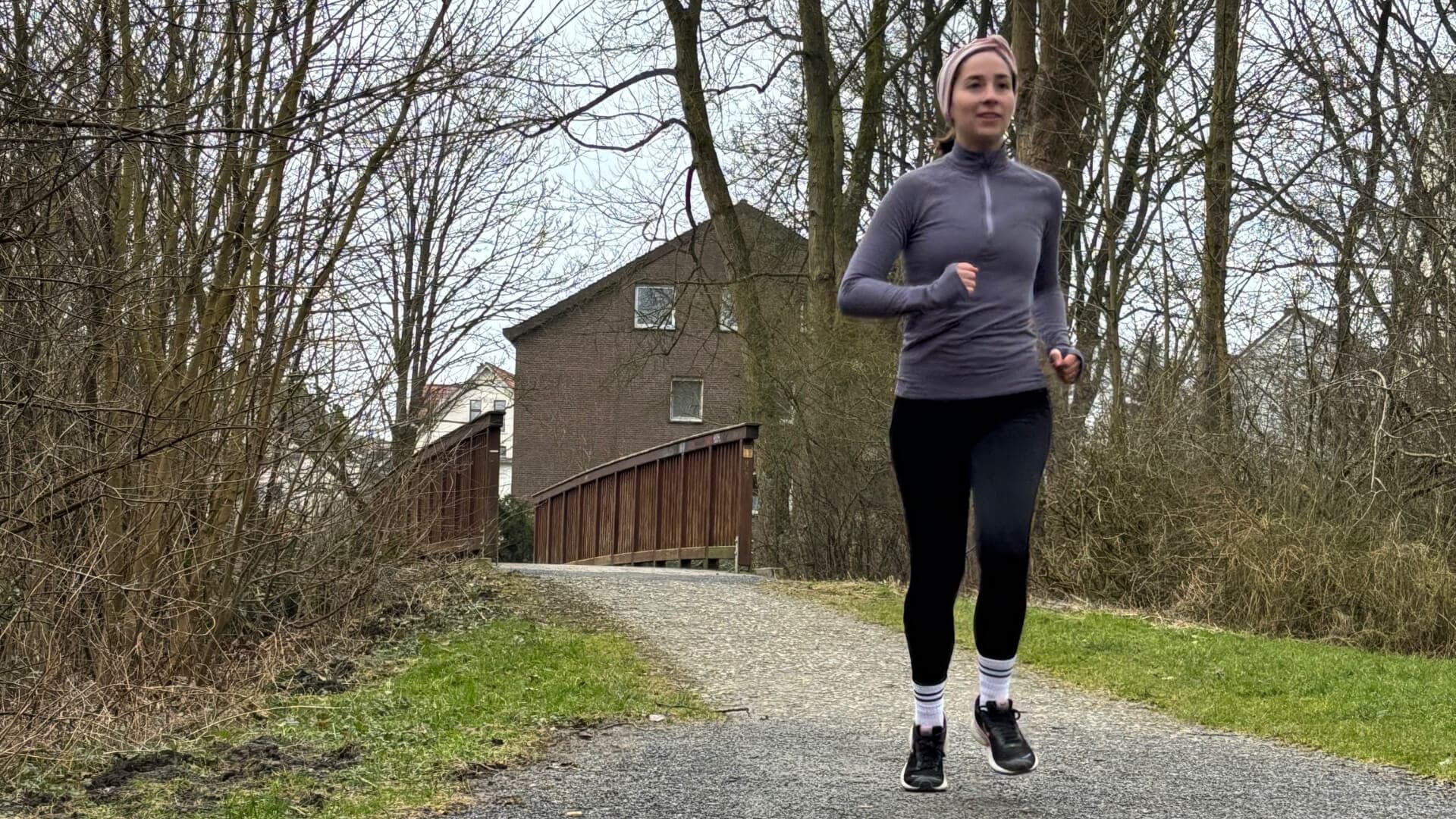
My name is Laura. I started running eight years ago – to clear my head after work. But knee pain kept me from being able to run regularly. A new pair of running shoes was finally the solution. Today I run pain-free. This is my true runner story.
READ THE NEWEST
U-RUN STORIES
Sabrina Mockenhaupt: This shoe got me running again
2025-10-31

Sabrina Mockenhaupt has achieved everything that many runners dream of. Running was and is her life, until the pain eventually became too much. Today, she is running pain-free again – this is her story.
Laura Schmidt: I have rediscovered running for myself
2025-03-07

My name is Laura. I started running eight years ago – to clear my head after work. But knee pain kept me from being able to run regularly. A new pair of running shoes was finally the solution. Today I run pain-free. This is my true runner story.
RECOMMENDED BY








RECOMMENDED BY








GET 10 % OFF YOUR FIRST ORDER!
Get your personal running updates with exclusive discounts, product news, training plans and tips for healthy running - straight to your inbox. 10% discount on your next order.
SERVICE
ABOUT US
© 2025 True Motion Running GmbH


